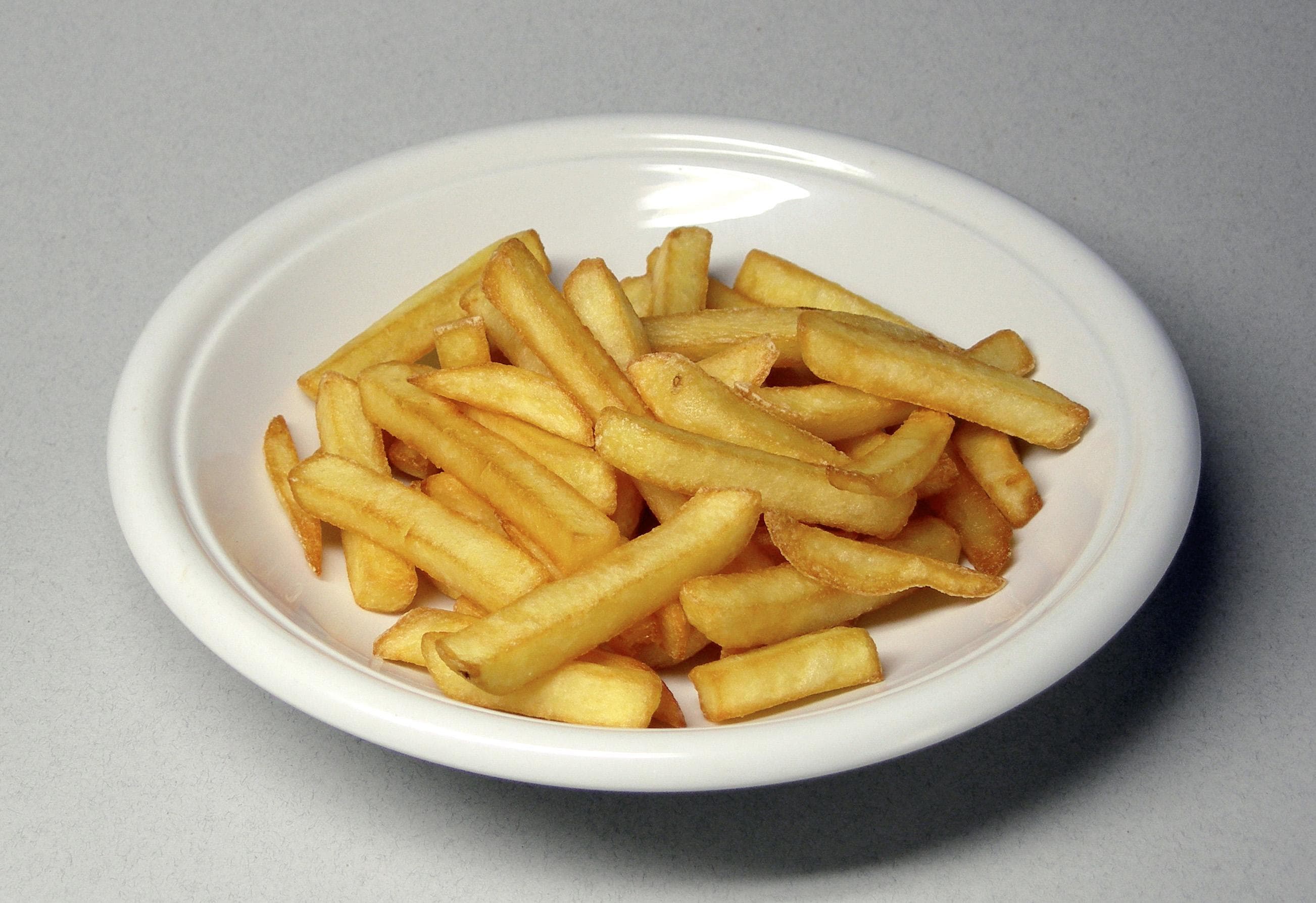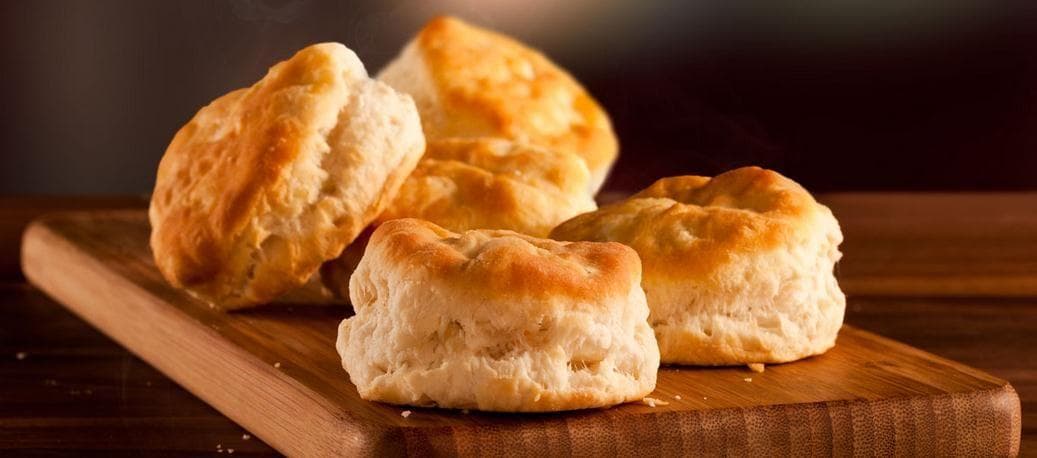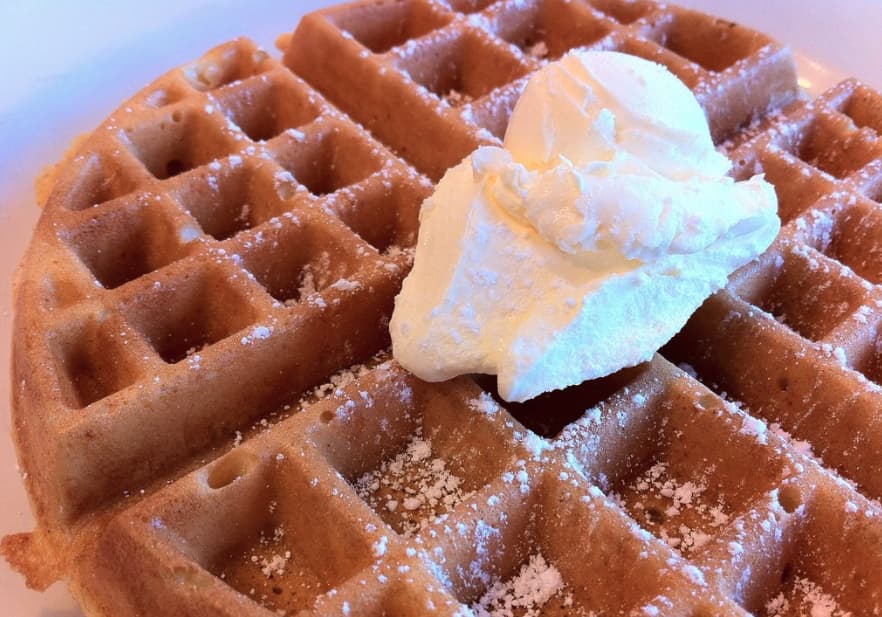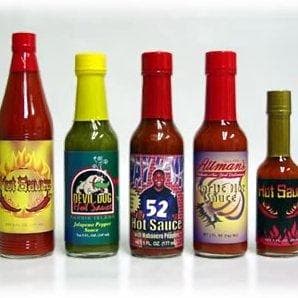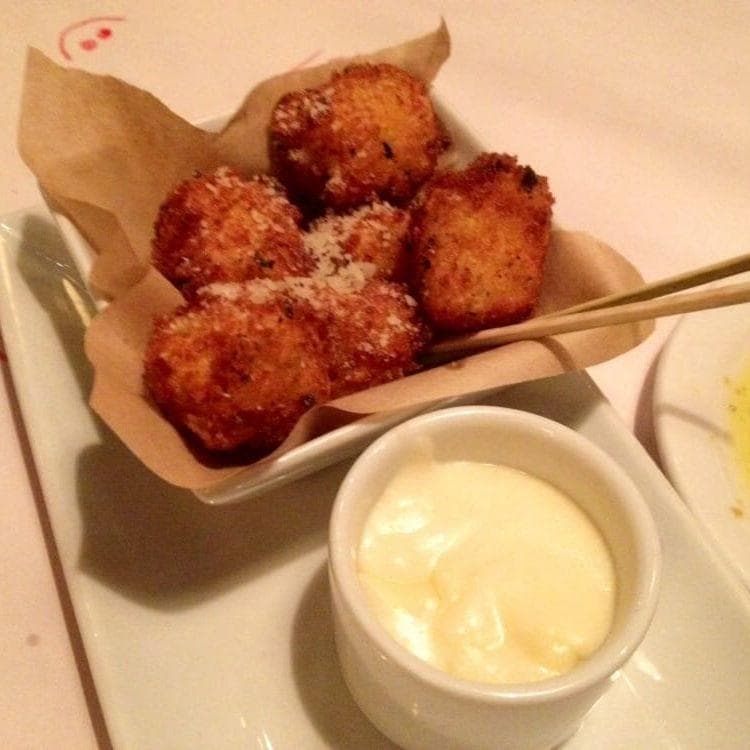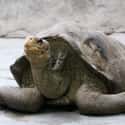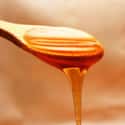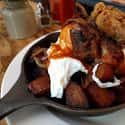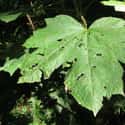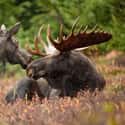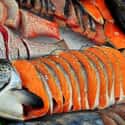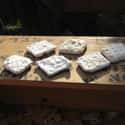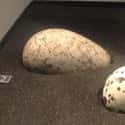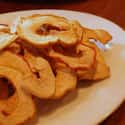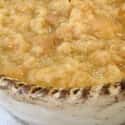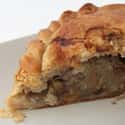-
(#1) Poppy Seed Potato Bread Made With A Sourdough Starter
The evolution of poppy seed potato bread is a tale that spans territories and generations. It started during the California Gold Rush, when miners developed an alternative to yeast that would allow them to make softer and fluffier breads: sourdough. According to writer Ed Wood, "A true sourdough is nothing more than flour and water with wild yeast to make it rise and special bacteria to provide the flavor." Adding sugar to flour and water also does the trick, and keeping the concoction warm allows it to ferment.
Breads made with this unique mixture - called a sourdough starter - became a San Francisco standard as folks flocked from the mountains into the city to spread news of their findings, including their new favorite foods. San Francisco developed its own sourdough breads noted for their tangier flavor profiles.
Miners in California developed sourdough starters because manufactured yeast was hard to come by, especially as people moved farther away from settlements. Prospectors during the Klondike Gold Rush also relied on sourdough starters to make bread. In both the nether regions of Alaska and California, miners kept their starters alive and heated by keeping them close to their bodies.
Potatoes came into the bread-making mix during the Klondike Gold Rush because the starchy vegetables were more plentiful than flour in the Yukon. Miners added poppy seeds for an extra crunch, and poppy seed potato bread was born.
-
(#2) Galapagos Tortoise Liver
California's population boomed during its gold rush. Importers saw it as a chance to capitalize off an exotic trade item: intercontinental turtles. From sea turtles to Galapagos tortoises, the San Francisco markets went crazy for these reptiles. In 1849, at least 122 Galapagos tortoises were sent to the San Francisco Bay. The number was over 500 in 1855.
Butchering the mammoth tortoises was no easy task, but their parts were used in everything: pies, soups, and baked goods. Turtle steak was also a common dish, but many partakers believed the liver was the most delectable. As one captain wrote in his diary, turtle liver was "far superior to any kind of meat I ever ate."
Galapagos tortoise numbers declined dramatically as a result of their inclusion in Bay Area menus. As the California Gold Rush ended and San Francisco prepared itself for the burgeoning industrial era, interest in eating turtles declined, too.
-
(#3) 'Squaw' Honey
The more inventive miners were able to forage wildflowers and herbs in order to make syrups, soups, mashes, and spices, adding a punch of flavor to the bland ingredients they had room for on their journeys.
An example of such a mixture made by Klondike explorers is "squaw" honey. Since there were no bees in Alaska, there was no way to harvest honey. Instead, miners boiled clover and other flowers into a syrup. The sweet nectar inside the flowers gives the syrup a honey-like flavor.
Sweet clover is actually a weed common in woodlands. These sweet-smelling annuals can grow as high as 6 feet, making them easy for miners to spot in warmer months.
-

(#4) Kelp Relish
The first commercially preserved foods in America were distributed around the time of the California Gold Rush, but food preservation methods had been around for centuries. In the Yukon, miners and explorers starting making their own versions of a preserved food enjoyed by Native Alaskans long before their lands were encroached upon: kelp relish.
Still a common relish ingredient in Alaska - as well as Asia - kelp is a larger type of seaweed that grows up and down the state's coast. While harvesting kelp can be daunting, using preservation methods to keep it fresh for longer periods of time gave miners the freedom to travel long distances with a ready supply of relish.
A basic ingredients list for kelp relish involves saltwater, onion, lemon, pickling spice, brown sugar, vinegar, and - of course - kelp.
-
(#5) Hangtown Fry
Hangtown, CA, got its name from a series of hangings that occurred there, but the name is now affiliated more with food than public executions.
As the story goes, a miner struck gold in Hangtown (now known as Placerville) at the height of the California Gold Rush. The first thing he did was run to the nearest saloon and request the most expensive meal they offered. What the cook prepared was a massive omelet with bacon and oysters, which satiated the miner so well that the dish spread and gained its own moniker: Hangtown fry.
Recipes and variations of Hangtown fry abound.
-
(#6) Devil's Club
Devil's club, a plant that also goes by the nickname "Alaskan ginseng," is a tough and thorny shrub that grows from the Yukon all the way to the California coast. It grows tall and dense and can be a pain to harvest.
During the Klondike Gold Rush, devil's club was used as a spice, but it only worked if the leaves were plucked when they were young and under 2 inches long. In Ann Chandonnet's Gold Rush Grub: From Turpentine Stew to Hoochinoo, flavor variations of the plant get a vivid description: "Nibbled raw, the buds taste like intensely herbal celery leaves. Cooked, they are reminiscent of the edible bases of artichoke leaves."
-
(#7) Moose Pie
Moose were bounteous in the great Alaskan wilderness during the Klondike Gold Rush, so it's easy to imagine why the large mammals became prime game for miners. While some would eat moose meat as is, others took it to the next level, making savory moose pies.
One recipe calls for moose steak. Another calls for ground moose meat. Potatoes and onions were often added to the pies for filling and flavor.
-
(#8) Salmon Stew
Seafood was a staple for lucky miners, and Pacific salmon was a fatty treat for those who came across it.
Stews and soups bring ingredients together before they spoil into a filling meal that can last for a few days. This recipe is a variation on the sort of stew miners in the Yukon would have feasted on, calling for salmon, milk, butter, flour, salt, and pepper.
-
(#9) Hard Tack
Hard tack is about as flavorful as it sounds. Composed of only two ingredients - flour and water - hard tack was the mass-produced snack of the military that became popular among miners for being cheap and easy to make.
Essentially dry, stale crackers, hard tack was prevalent during gold rush times, a testament to the fact that it wasn't all glitz and glamour for gold miners. In fact, most of them lived in dirty camps with little to eat. If they were lucky, they could add some salt to their hard tack.
-
(#10) Murre Eggs
Just off the coast of San Francisco, the Farallon Islands were home to large populations of seabirds during the California Gold Rush. As food supplies diminished due to the population boom, adventurous businessmen traveled to the Farallones in search of a profitable protein source: eggs.
Egg poaching became a dangerous, but trendy, endeavor. "There are really no shores where you can land a small boat except with great perils," said Mary Jane Schram of the Gulf of the Farallones National Marine Sanctuary. After a San Francisco pharmacist started boating out to the islands and selling murre eggs in the city, the "egg rush" officially began.
Eggs of the murre, a bird that resembles a penguin, were favored because they were twice the size of chicken eggs. In 1851, the Pacific Egg Co. was founded. It's estimated that half a million murre eggs were poached each year, which had catastrophic effects on the bird's population.
Once the proliferation of chicken farms was able to satisfy the egg craze, the Farallones were left alone. Today, murre rookeries are thriving.
-
(#11) Dried Apples
Once prospectors made the exhausting journey all the way to California, the food available to them in camps was not much different from the minimal rations they carried with them. While they were fed tales about the riches awaiting them, what they found instead were long, tiring hours of work and little nourishing food.
As one miner wrote, they were left with "hard bread which we eat half-cooked, and salt pork, with occasionally a salmon which we purchase of the Indians. Vegetables are not to be procured."
Typical fare in the camps included dried apples, which lasted much longer than fresh fruit. Dried apples were hated by miners, and one of them even took to poetry to articulate his disdain:
I loathe! Abhor! Detest! Despise!
Abominate dried apple pies;
I like good bread, I like good meat;
Or anything that’s good to eat;
But of all the poor grub beneath the skies
The poorest is dried apple pies.
Give me toothache or sore eyes
In preference to such kind of pies. -
(#12) English Monkey
English Monkey is a dish that made its way to the California gold mines during the gold rush. A testament to the diverse backgrounds and food preferences of those who made it out West, English Monkey, which is Welsh is originally, is also known as Welsh rabbit. It's theorized that poor Welsh people came up with this dish, and the English gave it the name Welsh rabbit as an insult.
It contains no rabbit - actually no meat at all - but is a sauce-like amalgam of bread crumbs, cheese, milk, and eggs. English Monkey is meant to be poured over bread or crackers.
1897's Practical Vegetarian Cookery contains a traditional English Monkey recipe:
Soak one cupful of bread crumbs in one cupful of milk about 10 or 15 minutes. Melt one tablespoon of butter, add one cupful of cheese broken into small pieces; Stir until melted, add the crumbs and one beaten egg, one half teaspoon of salt, a few grains of bicarbonate of soda as large as a pea. Cook for five minutes. Serve on wafers.
-
(#13) Cornish Pasties
Cornish pasties are another traditional food brought over from England. During the California Gold Rush, people traveled all the way from Cornwall, England, to get rich, bringing with them one of their favorite treats. According to one report, the stereotypical idea of a mine was a hole in the ground with a Cornish male standing at the bottom, eating a Cornish pasty.
These pasties are basically meat and potatoes inside a pastry shell, and they have remained a prominent fixture of the mining town Grass Valley, CA, to this day.
-
(#14) Roasted Bighorn Sheep
Colorado experienced its own gold rush, the Pikes Peak Gold Rush, from 1858-1860. Miners were forced to adapt to the harsh, high-altitude conditions, as well as the severely cold winters. Like the Native American groups that both predated and lived alongside them, the prospectors looked to their surrounding environment for food sources, hunting one of the most beloved mountain creatures: the bighorn sheep. They were hunted, stockpiled, and often sold at trading posts.
Bighorn sheep experienced a similar fate during the Klondike Gold Rush. The muscular animals were in high demand, and their meat was roasted over fires.
Due to little oversight, these sheep were hunted to the point of near-extinction. According to one report:
Stampeders hunted local game. What once was a seasonal hunt turned into a year-round activity. Moose, caribou, mountain goats, and other animals were all harvested. As people hunted, local animal populations disappeared. Anyone hunting had to travel farther to find game. For First Nations hunters, this meant altering traditions.
-
(#15) Nettle Soup
Nettles were used by Native Americans in Northern California long before the gold rushes. They found the fibrous plant good not only for weaving fishing nets, but also for making soup. As nettle leaves are one of the first signs of growth to arrive after snow melts, collecting and cooking them became a common practice in the gold rush era.
Nettles have a spinach or cabbage flavor when they're cooked, which made them a good alternative to greens that were unavailable to gold miners. The leaves were often mixed with starch to create a thicker consistency.
New Random Displays Display All By Ranking
About This Tool
After the gold mine was discovered, the Americans were exciting and the world shocked. The gold rush is of great significance to the economic development, agricultural expansion, and the transportation revolution of the United States in the 18th and 19th centuries. But whether it was the gold rush in California or Australia and New Zealand, there were not enough foods for the immigrants.
Opportunities and challenges always coexist. Many gold prospectors brought their own special food together during the gold rush. People can clear know the influences of the gold rush from these foods today, you could find random 15 surprising foods that prospectors ate.
Our data comes from Ranker, If you want to participate in the ranking of items displayed on this page, please click here.



